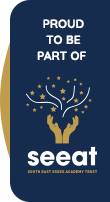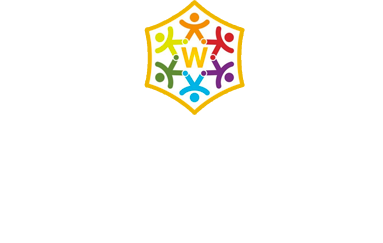Intent
At Westborough we would like every child to be able to express their ideas, thoughts, knowledge and skills through a range of different media and experiences, using self-expression, creativity and confidence.
Pupils will develop a sense of creativity and individual expression which enables them to interact with the world and convey a personal response in an original way.
Pupils will learn how to use different skills and techniques successfully and creatively in order to produce finished pieces of artwork that convey a personal response.
Pupils do not always have access to a range of different media at home; at school they are provided with opportunities to use a range of high quality materials with which to experiment creatively.
The national curriculum for art and design aims to ensure that all pupils:
- produce creative work, exploring their ideas and recording their experiences
- become proficient in drawing, painting, sculpture and other art, craft and design techniques
- evaluate and analyse creative works using the language of art, craft and design
- know about great artists, craft makers and designers, and understand the historical and cultural development of their art forms.
Our Vision
Inspiring curious, confident and critical artists
Our Principles
As a consequence of adopting these principles, pupils will:
Implementation
Curriculum Rationale
● The Art Curriculum is designed to blend the development of technical knowledge and skills with an understanding and appreciation of a wide range of art and design spanning different eras, disciplines, traditions, styles and artists.
● The knowledge of the curriculum is broken down into the following key strands, covering all aspects of the National Curriculum:
Substantive Knowledge
○ Art and Design Techniques
- Drawing
- Painting
- Sculpture
- Collage
- Printing
- Digital Media
○ Contextual Knowledge
- Artists & Their Work
- Art History, Traditions, Styles and Movements
Disciplinary Knowledge
○ Producing
- Inspiring, researching and exploring
- Use of Sketchbooks
○ Evaluating and Analysing
- Reflecting and Evaluating
- Language of Art and Design
- Within this curriculum, there is the expectation that drawing skills are developed and extended each year. However, painting, sculpture, collage, printing and digital media are deliberately paired into 2-year blocks to allow more immersive (but periodic) study.
- Within the Art & Design Techniques and Disciplinary Knowledge strands above, knowledge is organised hierarchically and progressively to support the development of necessary motor and visual skills. This can be viewed within the knowledge progression table below.
- Appropriate key artists, movements, styles and specific works are then matched to this knowledge to support children in learning about these techniques and skills at the appropriate level.
- There will be chosen artists/movements/works once we have used the curriculum for the first year and they will be sequenced to match the techniques chosen and to link into other subject topics of study where appropriate. There will be consideration for age-appropriateness, particularly regarding the themes explored within artists’ work.
- Note: consideration has been given to the breadth and balance of the coverage of the contextual knowledge to ensure a diverse range of artists, movements, traditions and media are represented throughout.
- Important: We will identify local artists of interest or significance and add these to the selections, once chosen. Art subject leaders should position these artists within the most appropriate unit of the curriculum and add key information about the work, story and movement/style of these artists to the knowledge overviews.
- It is anticipated that approximately one hour per week (or 2 hours every other week) is required to teach children the knowledge contained within this curriculum.
Impact
Knowledge End Points:
By the end of Year 6 pupils will know:
- how to draw from observation to produce detailed analytical drawings using: accurate positioning and placement; scale and proportion; light and shade; accurate shape and form; and perspective.
- how to choose and use different drawing techniques to respond to the context.
- how to choose, develop and mix colours, using colours for a specific purpose.
- how to paint using different paint types, brush strokes, surfaces and range of techniques as appropriate to context.
- how to use a range of materials to mould and manipulate to form a sculpture with accuracy and realism.
- how to plan and produce a montage using appropriate materials, techniques, form and placement to produce a final piece that is realistic or recognisable or aesthetically pleasing.
- how to combine printing techniques and materials, including producing own stencils and layering, to produce a specific design or artwork.
- how to use photographs and digital techniques, including manipulating and editing, to produce digital art pieces.
- the names, significance, features and selected work of a diverse range of local, national and international artists, architects and designers.
- how to recognise the differences and similarities between different artists’ work, practices and disciplines, and make links to their own work.
- how to research different artists' work and/or other stimuli to find inspiration.
- how to respond to a specific artist or movement using knowledge of line, shape, colour, form, texture, explaining the choices made and reasoning.
- how to select, match and combine visual features of materials and techniques to the purpose of the work.
- how to create sketch books to record their observations and use them to review and revisit ideas to improve their mastery of art and design techniques
- how to use connections between choices made in tools and techniques to show how a whole piece has been considered and responds to stimulus.
- how to adapt and modify during the creative process
Monitoring and Assessment
It is the responsibility of the Art and Design Co-ordinator to:
- monitor the Art and Design curriculum through updating the school’s policy, close communication with other teachers and staff, observation of children’s work and photographs of display work.
- provide INSET where appropriate. Where possible time will be made available to allow the co-ordinator opportunities to visit other classes, enabling monitoring and support to take place more effectively.
westborough art skills and progression curriculum 2022.pdf





